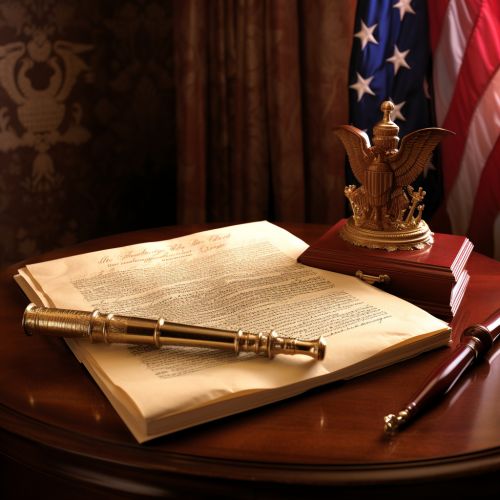Judiciary Act of 1789
Origins and Background
The Constitution of the United States, ratified in 1788, established the American federal government but left many questions about the judiciary branch unresolved. The Constitution did not specify the number of Supreme Court Justices, nor did it establish the existence of lower federal courts. The Judiciary Act of 1789 was the first piece of legislation to address these issues, setting the foundation for the U.S. federal judiciary system.


Legislative Process
The Judiciary Act was introduced in the Senate on June 12, 1789, by Senator Richard Lee of Virginia. After a series of debates and amendments, the bill was passed by the Senate on July 17. The House of Representatives passed the bill on September 17, and President George Washington signed it into law on September 24, 1789.
Provisions of the Act
The Judiciary Act of 1789 established the structure and jurisdiction of the federal court system and created the position of Attorney General. The Act set the number of Supreme Court Justices at six: one Chief Justice and five Associate Justices. It also created thirteen judicial districts within the eleven states that had ratified the Constitution by that time. Each district had a district court and a district judge. The Act also established circuit courts, which were given jurisdiction over more serious crimes and civil cases.
Impact and Legacy
The Judiciary Act of 1789 has had a lasting impact on the U.S. legal system. It established the federal judiciary as a co-equal branch of government, alongside the executive and legislative branches. The Act also set important precedents for judicial procedure and jurisdiction, many of which remain in effect today.
Controversies and Criticisms
Despite its significance, the Judiciary Act of 1789 was not without controversy. Some critics argued that the Act gave the federal courts too much power, infringing on the rights of the states. Others criticized the Act for failing to provide for enough judges to handle the workload of the federal courts.
Amendments and Revisions
The Judiciary Act of 1789 has been amended and revised numerous times over the years. The most significant changes came in the form of the Judiciary Acts of 1801 and 1802, which reorganized the federal court system and changed the number of Supreme Court Justices.
